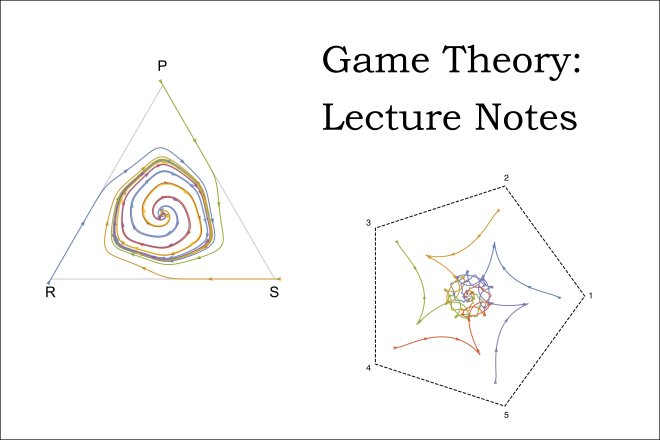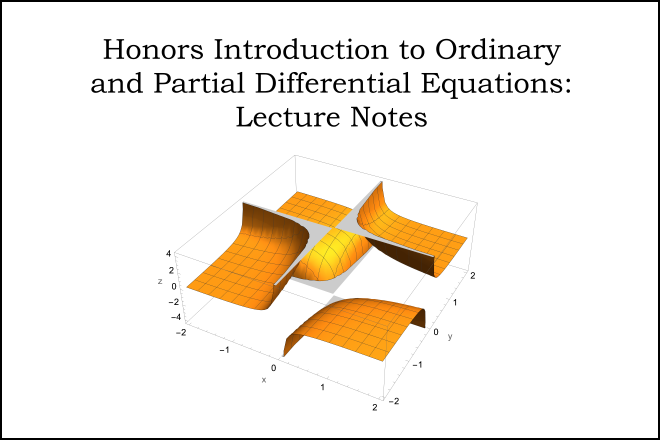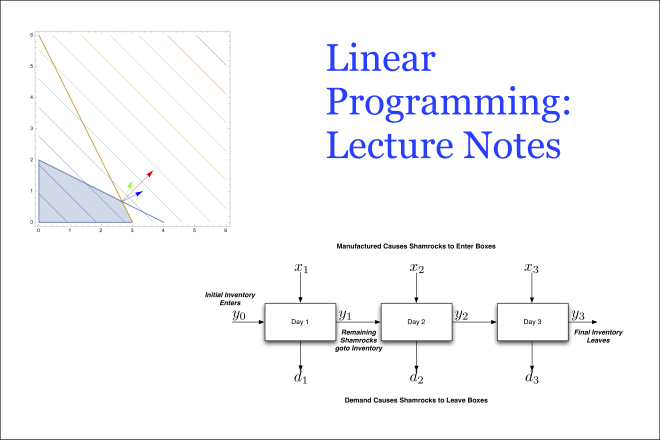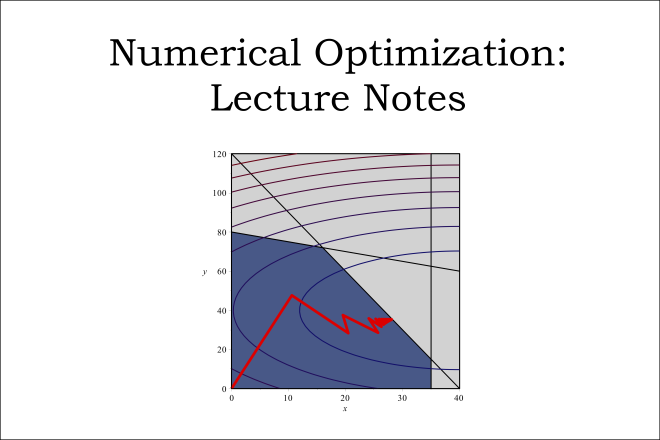Game Theory: Lecture Notes

Credit: Image adapted from figures by Christopher Griffin and is licensed under CC BY-NC-SA 3.0 US
Resource Description
This is version two of a set of lecture notes for MATH 486, Penn State's undergraduate Game Theory course. Game Theory is the study of decision making under competition. The first truly mathematical study of Game Theory was initiated by Von Neumann and Morgenstern. John Nash (of A Beautiful Mind fame) added substantially to the field with his proof of the existence of equilibrium solutions for general sum games. Since then many mathematicians, economists, engineers and others have made substantial contributions to the study of games.
The lecture notes are loosely based on Luce and Raiffa's Games and Decisions: Introduction and Critical Survey. This is the same book John Nash used when he taught (or so I've heard). There are elements from Myerson's book on Game Theory (more appropriate for economists) as well as Morris' book on Game Theory. Naturally, I've also included elements from Von Neuman and Morgenstern's classic tome.
Learn moreHonors Introduction to Ordinary and Partial Differential Equations: Lecture Notes

Credit: Image adapted from a figure by Christopher Griffin and is licensed under CC BY-NC-SA 3.0 US
Resource Description
This is a set of lecture notes for MATH 251H, Honors Ordinary and Partial Differential Equations. Differential equations (along with Linear Algebra and Complex Analysis) form the basis of all theoretical science and engineering. In a sense, differential equations represent the ultimate fulfillment of the initial work of Newton and Leibniz — a complete mathematical description of continuously changing phenomena. Without differential equations, we may not have walked on the moon, developed cell phone technology, seen black holes or have GPS systems. For whatever reason, differential equations seem to be the only way to coherently understand the universe.
Learn moreLinear Programming: Lecture Notes

Credit: Image adapted from figures by Christopher Griffin and is licensed under CC BY-NC-SA 3.0 US
Resource Description
This is a set of lecture notes for Penn State’s undergraduate Linear Programming course.
The lecture notes are (roughly) based on the first 6 chapters of Bazaraa et al.’s Linear Programming and Network Flows book. This is a reasonably good book, written primarily by and for Industrial Engineers. However, it does not present major results in the standard theorem-proof style common to mathematical discourse. This set of notes corrects this situation by presenting the material in a format for presentation to a mathematics class.
Many of the proofs in this set of notes are adapted from the textbook with some minor additions. Additionally, I prefer to present maximization problems, while Linear Programming and Network Flows prefers the minimization format. I’ve modified all the proofs to operate on maximization problems. When used with the book, the student can obtain a complete set of proofs for elementary Linear Programming.
Learn moreNumerical Optimization: Lecture Notes

Credit: Image adapted from a figure by Christopher Griffin and is licensed under CC BY-NC-SA 3.0 US
Resource Description
This is a set of lecture notes for MATH 555, Penn State's graduate Numerical Optimization course. Numerical Optimization is the study of maximizing or minimizing functions through numerical techniques. Generally, it's rare to optimize anything other than through numerical techniques (unless of course you're talking about something really simple). Numerical optimization is used every day and is built on techniques from multi-variable calculus, optimization theory (obviously) numerical linear algebra (for algorithm efficiency) and other branches of mathematics.
Learn more